Shipping Container Homes: A Complete Guide
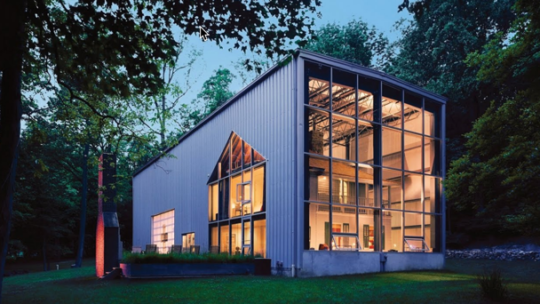
Shipping containers are becoming more and more popular to those looking to live off grid. These large steel boxes are being transformed into beautiful living spaces, and can cost a fraction of the price you would spend on a home, or tiny house.
In this Shipping Container Homes: A Complete Guide, I will break down all of the things you should consider before making the move to a shipping container house, and how much money it might set you back if you DIY, or have it constructed for you. Stick around!
The Positives and Negatives Of Shipping Container Homes
The first thing you should do before rushing to build your new container home, is to weigh the good and the bad. There will always be pros and cons when building a new home, so lets look at some things you’ll deal with on your container building journey.
The Positives:
Greener Living
If you are one that cares about the environment, and you’re looking for a way to decrease your carbon footprint, then container homes are a great way to do so. These large containers can cost loads of money to ship back after being emptied over seas.
This typically results in companies melting the boxes down to recycle the metal, sending them to scrap yards, and using massive amounts of energy. Recycling these large steel containers helps save the planet, and can save you some money on your new tiny home.
They’re Affordable
Shipping containers can be found everywhere, and typically in abundance. This allows them to be purchased at a lower cost. The shipping container itself, is the main structure of your home, eliminating the cost of building out a frame.
Of course you will have other costs elsewhere which I will discuss below, but the container itself helps with a large amount of money that would be spent building. Not only is it cheaper to build out, but can be done by those with less experience since there is less structural work that needs done. Living mortgage free will help motivate these small, and conquerable building moments.
Structure Strength
Shipping containers are built to withstand time. These strong boxes are meant to handle the rough seas, heavy weights, and being tossed around by massive cranes. Not only are these steel boxes tough, they can also be stacked to create larger two story homes. If you live in an area that is prone to natural disasters, than maybe you should consider a shipping container home, instead of a portable wooden tiny house.
Easy To Transport
Like any other tiny home, the shipping containers are extremely easy to transport. I think the biggest advantage to living in tiny homes, or shipping containers, is that you aren’t nailed down to one place. Thankfully, shipping containers are moved across the United States everyday, so if you ever decide to move your home, this can be easily done. Even if you build your container home on a concrete pad, there are still ways to move your home if need be.
Quicker Building Process
When constructing a new home, the structure, or frame, is the most time consuming step. Shipping container homes require no such step. Because the frame is already there for you, the building time is cut in half. The reason I really love shipping container homes so much, is that you can spend more time making the inside awesome, instead of spending all of your time framing.
The Negatives:
Insulation Issues
Lets face it, the large shipping containers are just big steel boxes. Unfortunately steel is an excellent transmitter of cold and heat. This makes it very difficult to regulate the temperature inside of a shipping container home. Now, don’t worry, there are plenty of options for fixing this con.
The best way to battle the hot and cold problem is to use the proper insulation, and make sure that you use the correct paint for the outside of your home. If you neglect the insulating step, this will result in lost energy, and inefficient heating or cooling.
Hazards To Your Health
The first thing you need to understand about shipping containers is that they weren’t meant for humans to live in them. The steps taken to ensure that the shipping container lasts the tests of time, may be harmful to your health.
Many companies use toxic paints, solvents, and insulation materials that may be harmful to humans over an extended period of time. Some examples of these products would be lead, chromate, and phosphorus-based paints on the walls. Chromium and Arsenic may have been used to eliminate pests from ruining the wooden floors.
Lastly, it is very important to do a thorough inspection of the container you are going to buy. These containers could have been carrying anything. You want to make sure that your shipping container is rid of all of the toxic chemicals, or residue before beginning your build.
The Carbon Footprint
A shipping container is essentially a large steel box until you make it habitable. With this in mind, the amount of hazardous waste produced from construction is more than ideal. The container needs to be completely sandblasted, the floors need to be replaced, windows need to be cut, and transporting it will also create carbon emissions. Keep this in mind when planning out your build.
Obtaining A Permit
Depending on the location of your newly constructed container home, you may need to jump through some hoops in order to live in it. Most counties have different building codes, and zoning laws, so make sure you do your research.
Proper planning for these permits will save you time, as the permits may take some time to be obtained.
Cost Of Building Shipping Container Homes
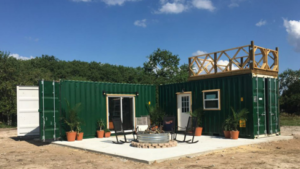
The cost of your shipping container home is going to depend on a massive amount of variables. You can purchase a shipping container house for anywhere between $50,000 and $400,000. The location, the material cost, construction costs, the size, and other home decor costs all factor in on the price of your container home.
Below is everything you need to know about buying a pre-built container home, buying an existing shipping container home, and even DIY. Lets break it down.
Purchasing A Custom Shipping Container House
One of the most popular options you have is to order a custom made container home from one of the many builders around the united states. This of course, is the more expensive route, but also the least strenuous.
Some companies will have base models they build for you to choose, or you can completely customize your container home. The price range on these options ranges widely, but will ultimately be cheaper than investing in an actual home. This can also prevent any pitfalls you may encounter during a building process.
Shipping Container Homes: Builder Options
Instead of scouring the internet for the best builders, we did some of the research for you. We found some of the most popular builders of container homes and have them listed below. Check out some of the options you have from each of these builders!
Rhino Cubed

Rhino Cubed is one of the more popular container home builders, and has dedicated their time and energy into designing some of the coolest, and comfortable living habitats. The building company is located in Colorado, and currently has 4 different container home designs that you can choose from. If you would like to learn more, check out our Rhino Cubed Review here!
Honomobo

Honomobo is another very popular container home builder, and is dedicated to creating beautiful high-end modular homes. This shipping container builder company has plenty of options when it comes to design, and can create anything to meet your living needs. If you are looking for a top notch tiny house designer, then look no further than Honomobo. To learn more about this company and the options that they have to offer, check out the full review on Honomobo here!
BMarko Structures

BMarko Structures is located in Georgia, and is a shipping container builder and designer for commercial and residential structures. This company specializes in shipping container structures, whether that be for construction work, concert events, or even a backyard villa. To learn more about BMarko Structures, you can read the full review here!
If you do decide to build your own, make sure you do research, many problems that evolve can offset the money you are trying to save. If cost is still an issue, and you would rather buy a used or existing container home, lets check out more options…
Purchasing An Existing Container Home
If customizing isn’t your thing, then you can always purchase a container home that is preexisting. Sure, you won’t be able to make it your own, but this may save you some money, and hassle with building a custom container home.
If you see that you like a pre-built container home that is in your budget range, then this may be your best option. We searched the internet, and found a few different examples of container homes that you could buy right now!
Weizhengheng expandable flat pack prefab module container house with solar energy
Container Home / Tiny House – Pre-Fabricated, Furnished, Brand New, Custom Home
DIY Shipping Container Home
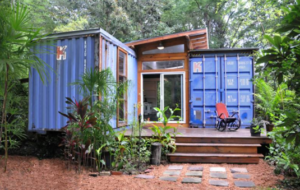
More and more people everyday are flocking to DIY videos on Youtube looking to build their very own tiny houses, and shipping container homes. I’m sure that their are many of you that are experienced in the carpentry field, and can handle building your own container home.
This option, of course, is the more labor intensive way of living in a container home, but can be extremely gratifying if completed. Not only will building your dream home be fulfilling, but it can also save you loads of money. Measuring every cent that is spent on each fixture of the house, and keeping the money from any shady contractor will be rewarding to the soul, and your bank account. Lets breakdown the estimated cost of a DIY container home…
Average Cost Of A Shipping Container House
Shipping Containers– $500-$1,500 (This will vary, and can be negotiated if you find the right place, or person)
Land– If you need excavation work done, or a foundation laid, this can cost you upwards of $15,000 if hired out. You can also take a look at our Finding Land For Your Tiny House, for other options to find a place for your new container home!
Heating and Cooling– Depending on size I would budget at least $4,000 on your units and installation. Check out our guide to Heating and Cooling for a better idea on what you’ll spend on your HVAC unit!
Plumbing– This will also depend on your set-up. Are you connected to the grid? Septic? Composting? A changing variable. Budget $5,000 for plumbing if you need running water.
Electrical– Again, I hate to say it, but your electrical layout and cost will change depending on your needs. Solar energy is becoming a huge industry, and many minimalists are trying to tap into the service. If you’re interested in learning more about Solar Energy, check out our guide to living off grid. If you need electrical wires run, or you’re doing it yourself, budget around $5,000 – $7,000 on your electrical system.
Roofing– The roof of your container is a crucial aspect of your home that needs to be protected. There are many roofing techniques you can use to protect your container home. You can always use your standard roofing, but you’ll want to add a slight slope. Most water damage comes from stagnant water sitting and eroding the top of the steel box. If standard roofing isn’t your style, there is a company that specializes in container roofs.
Insulating– Insulation is very important, especially in a steel box. Depending on the size of your container home, budget around $5,000.
Flooring– This will be another $5,000, depending on materials, and labor costs. This of course is just estimated, and can obviously be done cheaper if you know a guy, who knows an guy, who does floors.
Shelving and Storage– I would budget $2,000 for this. I’m more handy than most, and would look for cheap ways to build my own, or refurbish old, but if you aren’t that type of person, you may spend more.
Doors and Windows– These two combined could cost you around $6,000, depending on brands, and store prices. The glass will be the bulk of the cost, and can be upwards of $4,000 to have windows installed.
Walls and Paint– The price can fluctuate depending on your preferences. Are you going with a wood grain wall? Drywall? Paint? Budget around $5,000.
With all of those things combined you are looking to pay between $50,000-$60,000 for a container home that you built to your specific needs. Of course these are just estimated costs, and can be done for much cheaper, or much more expensive. This is merely a breakdown of things you should prepare for when saving for a new container home.
Shipping Container Home Plans
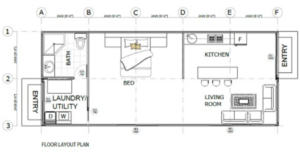
Unless you’ve spent your life building homes, or you’re a skilled architect, you’re going to need some building plans. This is basically a blueprint of your home, loaded with exact specs, and designs, with a guide to build your own home.
When looking online, you’ll find that most shipping container home blueprints cost between $50-$250. You may be able to find free plans, but you’ll still need an architect, which can cost thousands of dollars.
The Common Screw-Ups When Building A Container Home
1. Purchasing The Wrong Container
There are many people that don’t take the time to purchase the right shipping container for their needs. Shipping containers have many different options when it comes to size, width, and height. There are high cube containers with an extra foot of head space. These containers may cost a little bit more money, but you’ll thank yourself later for that extra foot.
2. Poorly Inspected
If you are trying to pinch pennies, make sure you don’t on the quality of your shipping container. Those who don’t want to spend full price on a new shipping container often purchase dented containers, or know nothing about the product that was shipped in that container. All of these things can be damaging to your home, and your health if you aren’t careful.
3. Know The Laws
The first thing to do before starting your building process, is to make sure you are legally allowed to build your new shipping container home. Contact your local public works, and make sure that you have, or can acquire all of the proper documentation to build your new tiny home. Many people brush this part off, or procrastinate, resulting in huge disappointment, or months of waiting for permits.
4. Properly Insulate Your Container
The insulation of your tiny container home is absolutely crucial to whether or not you are comfortable throughout the year. Of course, the type of insulation is going to change depending on your climate and location in the world.
The type of insulation that you use, can also depend on personal preference, and how “green” you want to be. The most popular insulation used on these type of homes is spray foam, blanket insulation, panel insulation, and or newspaper.
It is pertinent to remember that the hot and cold climates aren’t what weathers your container home, but in fact, the condensation that may collect because of the steel frame. With the collection of condensation, dampness can lead to rust, or other problems for your container home in the future.
5. Changing Too Much Of The Structure
Customization is probably one of the leading reasons why people make the switch to tiny houses or container homes. Unfortunately when you customize your structure too much, it becomes weaker and can become more expensive to support. If you are cutting multiple holes for windows, or taking out large sections of walls, then you need to find other ways to support your steel home. This may delay build times, and cost you more money out of pocket.
6. Selecting The Correct Contractor
Finding the right contractor the hard way can be extremely disappointing, and quite honestly, expensive. Do research, and ask around. Make sure that you are choosing the very best contractor to do the work on your container home. There are many container home builders around the United States that would be glad to answer your questions and give you tips on building your new container home. Ask around your community for the highly rated contractors, and contact them with any building questions you may have. Don’t settle for a cheap contractor, especially when you’re building a custom dream home.
In Conclusion
Shipping container homes are on the rise, and becoming a much more popular place to dwell. With unlimited customization, these steel boxes are an easy, cheap, and fun way to build a tiny home. I know that some of you will get discouraged, thinking that this may be too much work, or a little expensive for your budget, but I can assure you that the outcome is worth it!
Learn from your experiences. Everyone has to go through turmoil when building or buying a house. Keep your head up, do your research, and be on your way to living a more free, off the grid life, in a new shipping container home! Let us know if you live in a container home, and how the process went for you. Thanks for reading!

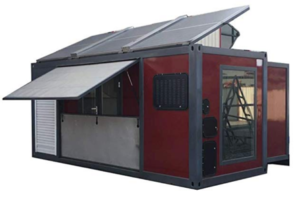
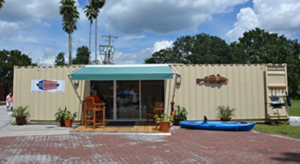
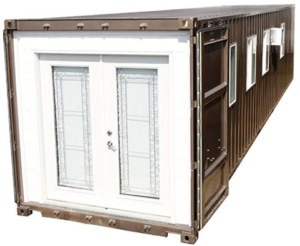
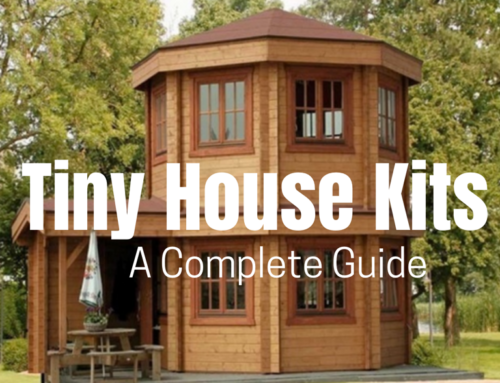


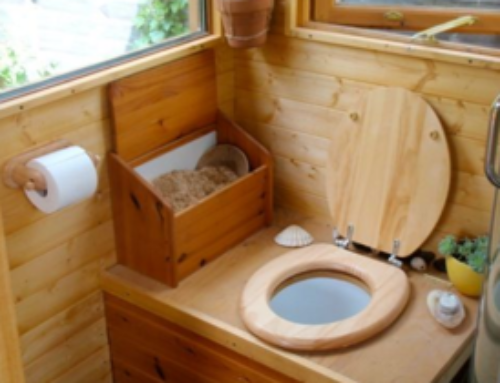

[…] greatest advantage of buying shipping container homes is that they are supposed to be pretty cheap. You may invest in an old and used shipping container […]